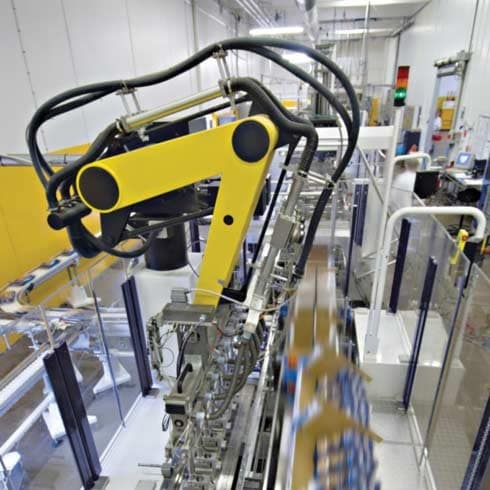Building Controls Delivery Models In The Construction Industry
By: Chris Saltz
Date: May 2, 2017
One of the things our firm sees on a regular basis today is a new building technology startup (usually a Silicon Valley software firm) struggle getting a foothold in the commercial building new construction industry. The struggle is often the result of the tech company (or even the interested building owner) not understanding how building controls are designed, procured, and installed. We covered the industry design process in an earlier article ‘Division 25 Integrate Automation’. Here we will briefly describe the 3 common procurement & installation delivery models (contracting). We’ll also cover an emerging 4th delivery model.
The MANUFACTURER

This has, for many years, been the most common “controls contractor” on the jobsite. Since Walter Johnson invented the thermostat over 100 years ago, Trane released the “integrated controls & HVAC equipment” product line over 20 years ago, Honeywell’s Alerton brand released BACnet devices, or Honeywell’s Tridium brand released the first broadly accepted licensing model for a total-building software integration platform, manufacturers have led the way as our new construction installers for building automation systems (BAS). The obvious advantages include the stability and geographical coverage of multi-billion dollar global enterprises (although in many geographies the manufacturers have distribution agreements with independent contractors to represent their product lines). One downside today can be limited vision, as Manufacturers are of course incentivized to look no further than their own products for solutions. Often their team’s skillsets are limited to their product focus area (temperature controls only, or security only, for example). And despite the constant acquisition activities of these corporations, there is zero chance that any one brand will ever have the “best in breed” for everything. As an analogy, in Apple’s App Store; the great majority (and all of the Top 10) of the 2.2 million apps available were developed by 3rd parties, not Apple.
The MECHANICAL CONTRACTOR

The very first building controls were pneumatics (using compressed air). This meant a great deal of piping throughout the building, connected to air compressors. It made sense that the mechanical engineer would design this system and that a mechanical contractor would install. Many older buildings today are still operated using pneumatic systems. To this very day, the organizations that recommend the responsible party for BAS design (mainly CSI and AIA) still assign it to the mechanical engineer (Specification Division 23 09 00). With the shift to computers controlling the building systems via digital devices over the last few decades, many new but significant challenges now exist. To address this, some mechanical engineers and mechanical contractors have invested in specialty “controls/technology” groups within their organizations. Others have not, and simply rely on the controls Manufacturers (above). More challenging yet, 2 new trends further threaten this delivery model:
(1) building controls software cyber-security threats, and
(2) a growing list of non-mechanical systems being controlled and/or monitored (creating integrated design challenges and cross-trade collaboration issues).
The ELECTRICAL CONTRACTOR

An approach gaining momentum (especially on the U.S. west coast) is electrical contractors offering the BAS. This can be attributed to a few factors. Number one, electrical contractors for many years have been installing the low voltage communication wiring/conduit for the Manufacturer or Mechanical Contractor (as well as the Fire Alarm, Security, and other low voltage systems contractors). Secondly, with the addition of “lighting controls” in buildings they are now installing software, often times a completely duplicative software to the Mechanical BAS. There are certainly advantages to the Electrical Contractor model. Many of the BAS installation issues (the construction “punch list”) can be attributed to wires literally being crossed; having 1 party responsible for doing the physical field installation as well as the software programming can be an advantage. Remaining, however, is the challenge of this tier 1 subcontractor now owning responsibility for a growing list of trade contractors that have systems “on the BAS network” (plumbing, drywall, glass, etc.)
The UNIFIED SYSTEMS DESIGN/BUILD CONTRACTOR

An emerging approach to delivering the BAS (federal government, major airports, healthcare, etc.) has evolved from the Integrated Project Delivery (IPD) and Virtual Design & Construct (VDC) models. Building Information Modeling (BIM) during the design process requires an increasing amount of building asset information early in the design process. Not just for the BIM-3D design, but for the 4D/5D cost and schedule implications to the project. And for those organizations attempting to truly execute BIM-6D, designing with life-of-building operations and maintenance in mind, a new model for the BAS delivery is required. The Unified Contractor must coordinate multiple consultants collaborating on:
- the design of 100’s of systems/assets in the building and their impact on the BAS,
- the design of an over-arching, non-proprietary, brand-agnostic BAS (that will be monitoring and controlling all of those assets, as well as providing simultaneous system security and openness to 3rd party software applications),
- the design of the BAS-CMMS integration (connecting operations to the computerized maintenance management software), and
- the design of the auto-capture of the team’s BIM data into its final storage platforms (BAS & CMMS)
The main disadvantage with this approach is the difficulty in finding firms with the knowledge, skills, and experience is BAS, complex building systems, and software. But if you can, the opportunities are great for new technology adoption, and constructing a facility that is future-proof.
About the Author: Chris Saltz is the Managing Principal of FIX Consulting LLC, a Los Angeles based software & facility technology consulting, design, and design/build firm (www.fixconsulting.com). He has 30 years of experience in mechatronics (mechanical, electrical, and computer/electronics engineering). A highly decorated US Navy Submarine Warfare Officer, Chris has a mechanical engineering degree from Auburn University, and a nuclear engineering degree from the Navy. Before FIX, his experience included operating and maintaining complex systems on US Navy nuclear submarines, global strategic naval combat missions, and the management of several field offices for Fortune 500 technology companies.
Sample Client List: United Airlines, University of Illinois, Google, Apple, Cisco, CBS Studios, Hawaii DOE.
Practice Areas: Master Planning, Data Management, Software Solutions, Technology CM, Cost Controls
See Chris speak next June 7th: www.energyevent.com








